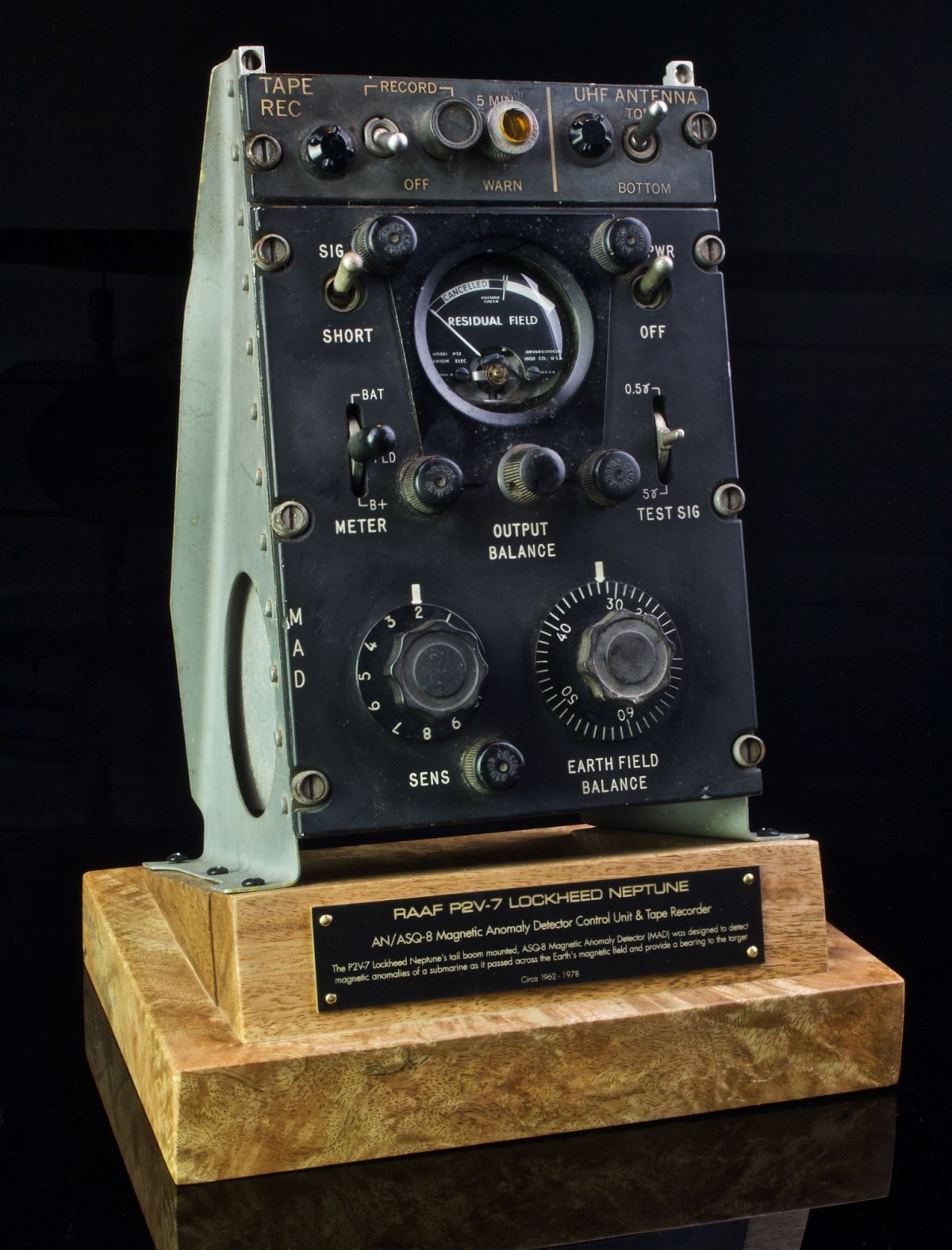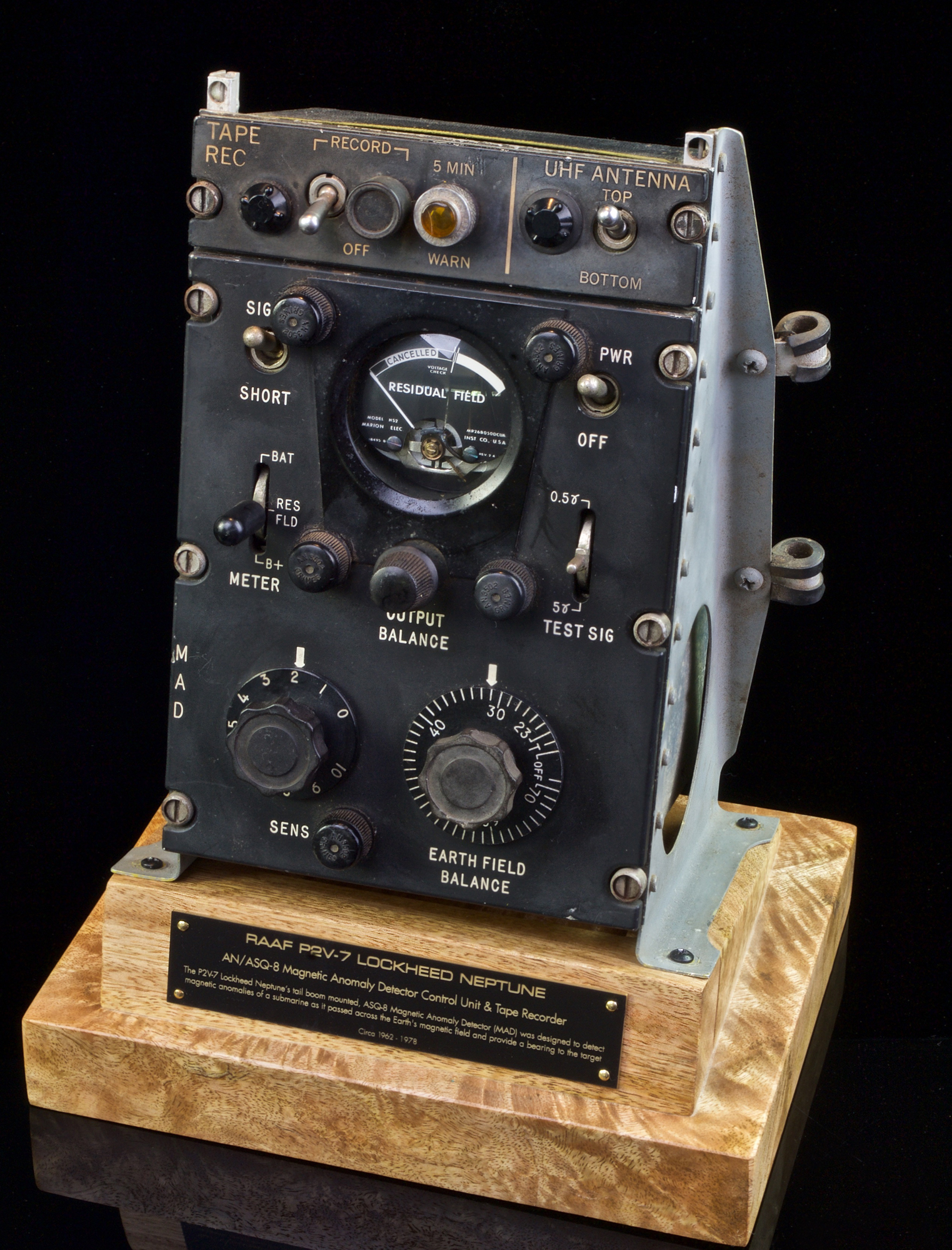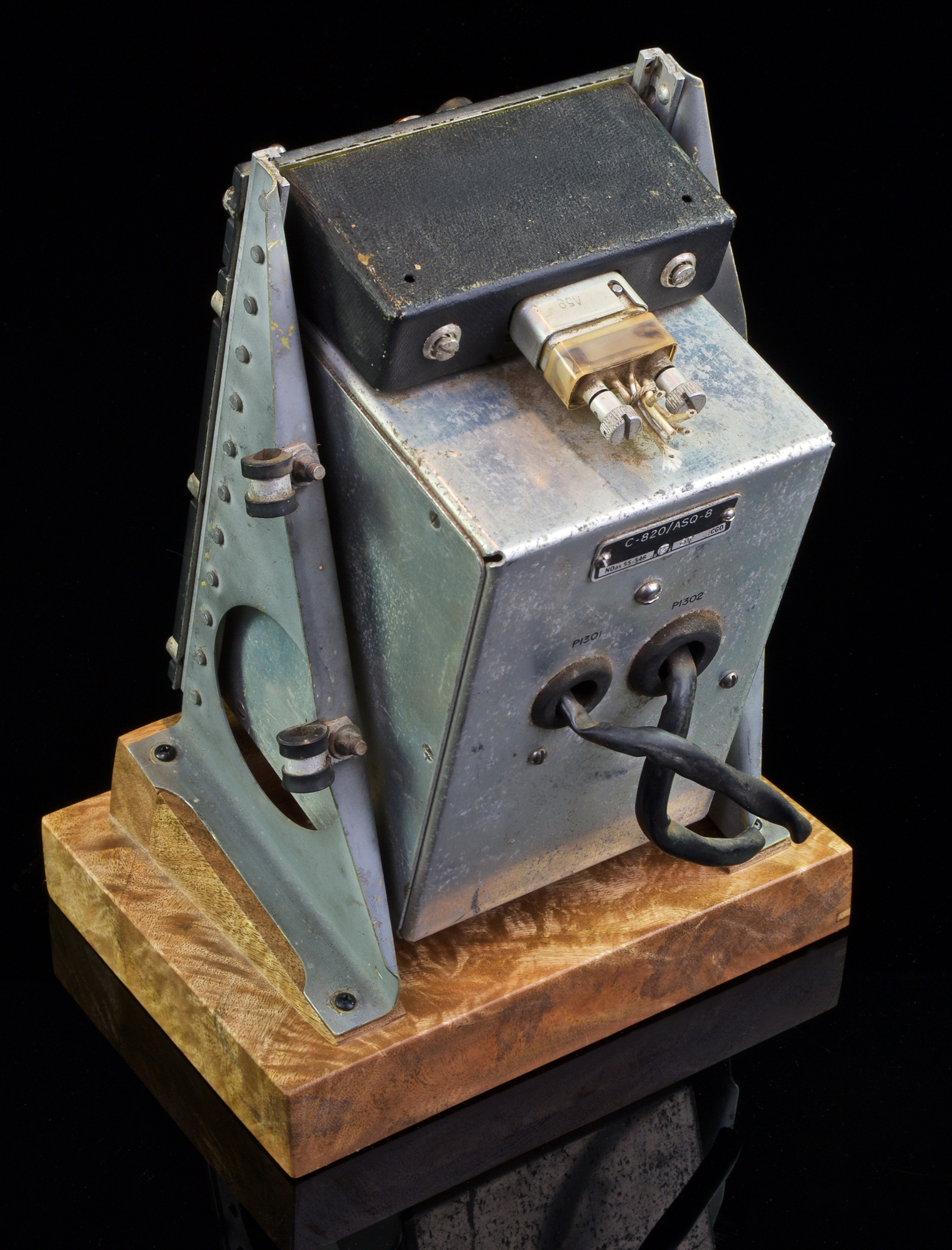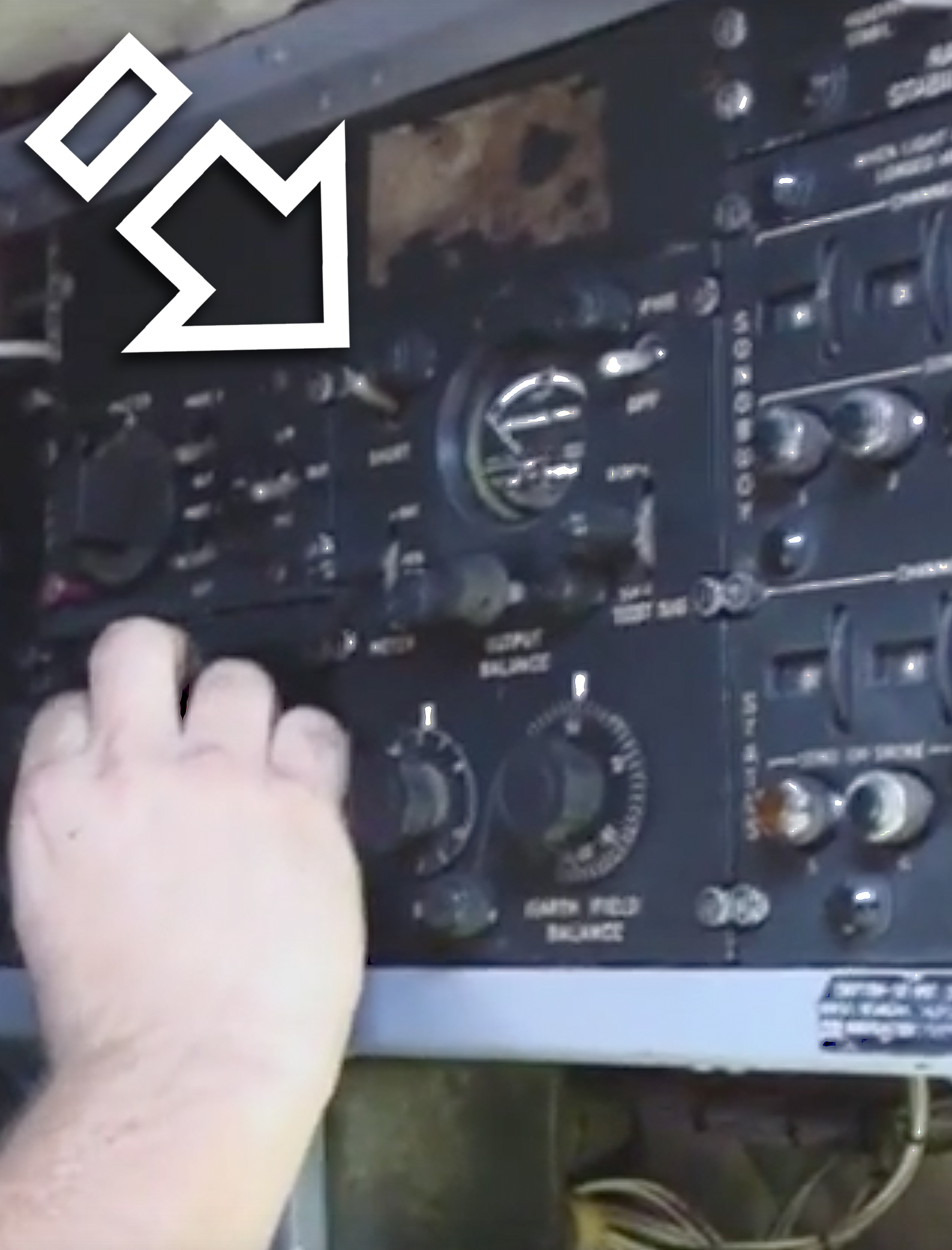- AUST POST SHIPPING
- 0438 654 235
- info@recoverycurios.com
- P.O. Box 7640 Cairns QLD Australia, 4870
-
0
Shopping Cart

P2-V NEPTUNE SUBMARINE HUNTER AN/ASQ-8 MAD UNIT
 The AN/ASQ-8 was a refined variant of the first magnetic anomaly detector units (MAD) and installed in the P2V Lockheed Neptune and the later Grumman S2 Tracker - both maritime patrol and submarine hunters used to detect soviet submarines during the Cold War era of the late 1950’s - early 60’s.
The AN/ASQ-8 was a refined variant of the first magnetic anomaly detector units (MAD) and installed in the P2V Lockheed Neptune and the later Grumman S2 Tracker - both maritime patrol and submarine hunters used to detect soviet submarines during the Cold War era of the late 1950’s - early 60’s.
The Magnetic Anomaly Detector (MAD) units were used to monitor minute disturbances in the Earth's magnetic field caused by the transit of submarines across the Earth’s magnetic field and were the descendants of early geomagnetic or aeromagnetic survey instruments used to search for minerals by detecting their disturbance of the normal earth-field.
Geological exploration through the measurement and study of variations in the Earth’s magnetic field had been first conducted by scientists in 1843 to aid in the location of ore deposits.
 Magnetic anomaly detectors had also been employed to detect submarines during World War II by harnessing the fluxgate magnetometer, an inexpensive and easy to implement technology developed in the 1930s by Victor Vacquier of Gulf Oil for finding ore deposits.
Magnetic anomaly detectors had also been employed to detect submarines during World War II by harnessing the fluxgate magnetometer, an inexpensive and easy to implement technology developed in the 1930s by Victor Vacquier of Gulf Oil for finding ore deposits.
MAD had been used by both Japanese and U.S. anti-submarine forces, either towed by ship or mounted in aircraft to detect shallow submerged enemy submarines. After the war, the U.S. Navy continued to develop MAD gear as a parallel development with sonar detection technologies.
In the late 1940’s rudimentary MAD units designed specifically for aerial detection of submerged submarines were installed in the US Martin PBM Mariner - a marine patrol float plane developed at the close of WWII. In the early 1950’s the Lockheed Corporation were tasked with developing a long distance maritime patrol and anti-submarine warfare platform (ASW). Their solution was the P-2 Neptune with its extended tail boom which contained the AN/ASQ-8 Magnetic Anomaly  Detector sensor to reduce interference from electrical equipment or metal in the fuselage of the aircraft.
Detector sensor to reduce interference from electrical equipment or metal in the fuselage of the aircraft.
Unfortunately biggest drawback with the MAD system was the fact that the submarine had to be very close to the Neptune’s position and the aircraft needed to be flying at very low altitudes for the detection of any magnetic anomaly. This greatly increased the time taken to search larger areas.
The AN/ASQ-8 produced paper chart and the sonar operators aboard would look for the tell tail blip in the needles track. The Neptune would then circle around and a number of sonar buoys were dropped across the suspicious area to provide a more accurate location of the submarines location and heading. which was then communicated back to the ‘hunter-killer’ group’s destroyers.
 The P2V Neptune became one of the first aircraft in operational service to be fitted with both piston and jet engines designed to increase attack speed when required via the jet pods before throttling back to patrol speed via the piston driven propellers. To save weight and complexity of two separate fuel systems, the Westinghouse J34 jet engines on P2Vs burned the 115–145 Avgas fuel of the piston engines, instead of jet fuel.
The P2V Neptune became one of the first aircraft in operational service to be fitted with both piston and jet engines designed to increase attack speed when required via the jet pods before throttling back to patrol speed via the piston driven propellers. To save weight and complexity of two separate fuel systems, the Westinghouse J34 jet engines on P2Vs burned the 115–145 Avgas fuel of the piston engines, instead of jet fuel.
To compliment the AN/ASQ-8, the Neptune was equipped with a belly-mounted AN/APS-20 surface-search radar enabled detection of surfaced and snorkelling submarines at considerable distances.
During the Vietnam War, the Neptune was used by the US Navy as a gunship, an overland reconnaissance and sensor deployment aircraft, and in its traditional role as a maritime patrol aircraft.
It was used again to great effect during the Falklands War in 1982, where the last two airframes in service (2-P-111 and 2-P-112) played a key role of reconnaissance and aiding the Argentine Dassault Super Étendards, particularly on 4 May attack against HMS Sheffield.
 The RAAF took delivery of the first P2V-5 Neptunes in 1952 with the 11 Squadron moving from their West Australian base to Richmond NSW. It was here that the only loss of a Neptune occurred when on 4 February 1959, during an air-test a Neptune crashed after an engine caught fire and eventually burned through the wing spar before the aircraft could land back at the base. All crew were lost and the the outcome of this accident was that the next variant of the Neptune (the P2V-7) to be ordered by the RAAF had fire extinguishing systems installed, the only twelve of this aircraft type so fitted.
The RAAF took delivery of the first P2V-5 Neptunes in 1952 with the 11 Squadron moving from their West Australian base to Richmond NSW. It was here that the only loss of a Neptune occurred when on 4 February 1959, during an air-test a Neptune crashed after an engine caught fire and eventually burned through the wing spar before the aircraft could land back at the base. All crew were lost and the the outcome of this accident was that the next variant of the Neptune (the P2V-7) to be ordered by the RAAF had fire extinguishing systems installed, the only twelve of this aircraft type so fitted.
The first P2V-7 aircraft arrived at RAAF Townsville in 1962 and served around Australia as a maritime patrol and sub-hunter until their eventual replacement by the Lockheed P3 aircraft in late 1977.
All of this Neptune's AN/ASQ-8 Magnetic Anomaly Detectors (MAD) Unit control switches and dials appear to be fully functioning although I have no idea if the unit itself is operational.
This P2-V Neptune Instrument comes complete with detailed Scale Model, Mango Wood Stand & Plaque plus Printed Fact Sheet featuring photo of instrument in aircraft cockpit.
All of the Neptune's AN/ASQ-8 Magnetic Anomaly Detectors (MAD) Unit control switches and dials appear to be fully functioning although I have no idea if the unit itself is operational.
Your Neptune AN/ASQ-8 Magnetic Anomaly Detectors (MAD) Unit , Original Recovery Curios Warbird Collectable includes:
- Original Warbird instrument
- Highly detailed hand-built and airbrushed 1/72 plastic scale model of the aircraft.*
- Hand-crafted and beautifully finished 100yr, Far North Queensland Mango Wood display stand
- Detailed, 2-sided, printed and laminated Instrument Fact Sheet detailing aircraft and instrument
- Removable Magnetic Display Arm
*The heavily detailed scale model is available with wheels & flaps up or down and in either Japanese, USN or RAN decaling. Upon order placement you will receive an email asking for your preferred configuration.
Your complete Recovery Curios Original Instrument Collectable is securely packed and delivery normally takes between 3 - 4 weeks approx.
Did you fly, crew or maintain a P2-V Neptune or have a friend, colleague or family member who did? Check out our PERSONALISED ORIGINAL INSTRUMENT COLLECTABLE OPTION here.
- LAND
- SEA
- AIR
- VINTAGE ORIGINAL AIRCRAFT INSTRUMENTS
- HAWKER TYPHOON
- VICKERS WELLINGTON
- FAIREY GANNET
- RYAN ST-A SPORTS TRAINER
- DE HAVILLAND TIGER MOTH
- HAWKER HUNTER
- Mc DONNELL DOUGLAS KC-10 AERIAL TANKER
- SOPWITH CAMEL
- AIRCO DH.1 AND DH.2
- JUNKERS JU 87
- CURTISS C-46 COMMANDO
- HANDLEY PAGE HAMPDEN
- SUPERMARINE SEAFIRE
- B-25 MITCHELL BOMBER
- BRISTOL BLENHEIM
- ENGLISH ELECTRIC LIGHTNING
- HAWKER TEMPEST MkVI
- YAKOVELOV YAK - 3
- FOCKE-WULF FW190
- FOLLAND GNAT
- AIRSPEED OXFORD
- SHORT STIRLING
- AVRO ANSON
- DOUGLAS C-133 CARGOMASTER
- HANDLEY PAGE VICTOR BOMBER
- DE HAVILLAND SEA VENOM
- VICKERS VALIANT BOMBER
- DOUGLAS A-26 INVADER
- GRUMMAN S2F TRACKER
- SUPERMARINE SPITFIRE
- LOCKHEED P2-V NEPTUNE
- P-51 MUSTANG
- BRISTOL BEAUFIGHTER
- DE HAVILLAND MOSQUITO
- B-26 MARTIN MARAUDER
- P3 ORION
- DOUGLAS A-20 HAVOC
- P-39 AIRACOBRA
- AVRO SHACKLETON
- B-17 FLYING FORTRESS
- B-24 LIBERATOR
- MESSERSCHMITT BF-110
- MESSERSCHMITT BF-109
- BRISTOL BEAUFORT
- KAWASAKI Ki-45 (NICK) INTERCEPTOR
- C-130 HERCULES
- CAC BOOMERANG
- AVRO LANCASTER
- GRUMMAN F4F WILDCAT
- F4U VOUGHT CORSAIR
- WESTLAND LYSANDER
- P-47 REPUBLIC THUNDERBOLT
- NORTH AMERICAN T-6 TEXAN - HAVARD
- C-47 SKYTRAIN
- DOUGLAS SBD DAUNTLESS
- CAC WIRRAWAY
- PBY CATALINA
- P-40 WARHAWK
- FAIREY SWORDFISH
- P-38 LIGHTNING
- HAWKER HURRICANE
- CURTISS SB2C HELLDIVER
- GRUMMAN F6F HELLCAT
- SEAKING HELICOPTER
- SEAHAWK HELICOPTER
- DOUGLAS A4G SKYHAWK
- GRUMMAN TBF AVENGER
- HANDLEY PAGE HALIFAX
- DOUGLAS SKYRAIDER AE-1
- GLOSTER METEOR
- JUNKERS JU-88
- F-86 SABRE JET
- SHORT SUNDERLAND
- B-29 SUPER FORTRESS
- F-9F GRUMMAN PANTHER
- F-100D SUPER SABRE
- BELL UH-1 HUEY HELICOPTER
- AVRO VULCAN STRATEGIC BOMBER
- CANBERRA BOMBER
- DHC-4 CARIBOU
- BLACKBURN BUCCANEER
- DE HAVILLAND VAMPIRE JET
- HAWKER SEA FURY
- LOCKHEED HUDSON
- LOCKHEED EC-121 WARNING STAR
- SEPECAT JAGUAR
- HAWKER SIDDELEY NIMROD
- HAWKER SIDDELEY HARRIER
- ARADO AR 196
- VOUGHT OS2U KINGFISHER
- LOCKHEED ELECTRA
- NORTHROP P-61 BLACK WIDOW
- BOEING CH-47 CHINOOK
- LOCKHEED PV-1 VENTURA
- BOEING P26-A 'PEASHOOTER'
- Ilyushin Il-2 ‘Sturmovik’
- WESTLAND WESSEX
- FAIREY FIREFLY
- VINTAGE AVIATION COLLECTABLES
- VINTAGE COLLECTABLE MODEL AIRCRAFT KITS
- RETRO STYLE METAL AIRCRAFT COLLECTABLES
- VINTAGE ORIGINAL AIRCRAFT INSTRUMENTS




